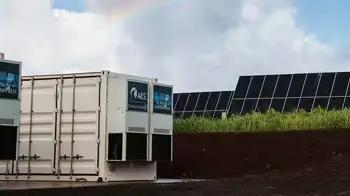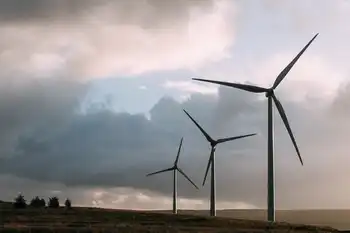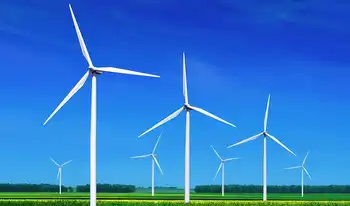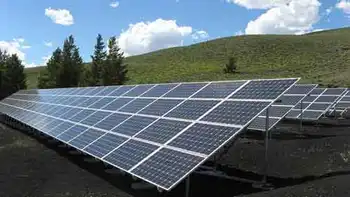Battery energy storage system eyed near Woodstock

Arc Flash Training CSA Z462 - Electrical Safety Essentials
Our customized live online or in‑person group training can be delivered to your staff at your location.

- Live Online
- 6 hours Instructor-led
- Group Training Available
Oxford Battery Energy Storage Project will store surplus renewable power near South-West Oxford and Woodstock, improving grid stability, peak shaving, and reliability, pending IESO approval and Hydro One transmission interconnection in Ontario.
Key Points
A Boralex battery project in South-West Oxford storing surplus power for Woodstock at peak demand pending IESO approval.
✅ 2028 commercial operation target
✅ Connects to Hydro One transmission line
✅ Peak shaving to stabilize grid costs
A Quebec-based renewable energy company is proposing to build a battery energy storage system in Oxford County near Woodstock.
The Oxford battery energy storage project put forward by Boralex Inc., if granted approval, would be ready for commercial operation in 2028. The facility would be in the Township of South-West Oxford, but also would serve Woodstock businesses and residences, supported by provincial disconnect moratoriums for customers, due to the city’s proximity to the site.
Battery storage systems charge when energy sources produce more energy than customers need, and, complementing Ontario’s energy-efficiency programs across the province, discharge during peak demand to provide a reliable, steady supply of energy.
Darren Suarez, Boralex’s vice-president of public affairs and communications in North America, said, “The system we’re talking about is a very large battery that will help at times when the electric grid has too much energy on the system. We’ll be able to charge our batteries, and when there’s a need, we can discharge the batteries to match the needs of the electric grid.”
South-West Oxford is a region Boralex has pinpointed for a battery storage project. “We look at grid needs as a whole, and where there is a need for battery storage, and we’ve identified this location as being a real positive for the grid, to help with its stability, a priority underscored by the province’s nuclear alert investigation and public safety focus,” Suarez said.
Suarez could not provide an estimated cost for the proposed facility but said the project would add about 75 jobs during the construction phase, in a sector where the OPG credit rating remains stable. Once the site is operational, only one or two employees will be necessary to maintain the facility, he said.
Boralex requires approval from the Independent Electricity System Operator (IESO), the corporation that co-ordinates and integrates Ontario’s electricity system operations across the province, for the Oxford battery energy storage project.
Upon approval, the project will connect with an existing Hydro One transmission line located north of the proposed site. “[Hydro One] has a process to review the project and review the location and ensure we are following safety standards and protocols in terms of integrating the project into the grid, with broader policy considerations like Ottawa’s hydro heritage also in view, but they are not directly involved in the development of the project itself,” Suarez said.
The proposal has been presented to South-West Oxford council. South-West Oxford Mayor David Mayberry said, “(Council) is still waiting to see what permits are necessary to be addressed if the proposal moves forward.”
Mayberry said the Ministry of Natural Resources and Forestry also would be reviewing the proposed project.
Thornton Sand and Gravel, the location of the proposed facility, was viewed positively by Mayberry. “From a positive perspective, they’re not using farmland. There is a plus we’re not using farmland, but there is concern something could leak into the aquifer. These questions need to be answered before it can be to the satisfaction of the community,” Mayberry said.
An open house was held on Sept. 14 to provide information to residents. Suarez said about 50 people showed up and the response was positive. “Many people came out to see what we planned for the project and there was a lot of support for the location because of where it actually is, and how it integrates into the community. It’s considered good use of the land by many of the people that were able to join us on that day,” Suarez said.
The Quebec-based energy company has been operating in Ontario for nearly 15 years and has wind farms in the Niagara and Chatham-Kent regions.
Boralex also is involved in two other battery storage projects in Ontario. The Hagersville project is a 40-minute drive northwest of Hamilton, and the other is in Tilbury, a community in Chatham-Kent. Commercial operation for both sites is planned to begin in 2025.
South-West Oxford and Woodstock will see some financial benefits from the energy storage system, Suarez said.
“It will help to stabilize energy costs. It will contribute to really shaving the most expensive energy on the system off the system. They’re going to take electricity when it’s the least costly, taking advantage of Ontario’s ultra-low overnight pricing options and utilize that least costly energy and displace the most costly energy.”











